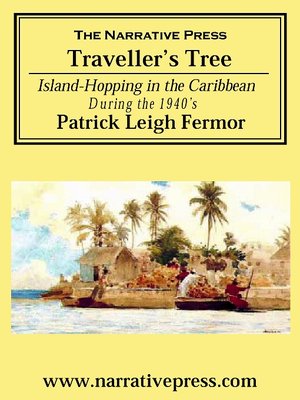
Sign up to save your library
With an OverDrive account, you can save your favorite libraries for at-a-glance information about availability. Find out more about OverDrive accounts.
Find this title in Libby, the library reading app by OverDrive.



Search for a digital library with this title
Title found at these libraries:
| Library Name | Distance |
|---|---|
| Loading... |
The Caribbean as Fermor experienced it in the 1940's was a world of incredible fusions and contradictions that didn't exist anywhere else in the world -- the mix of indigenous, African and European cultures, the juxtaposition of American advertisements with ancient cannibal practices, the incredible richness of the natural environment coupled with the decaying state of the colonial cities.
Although Fermor had travelled extensively, he found the West Indies to be unlike anything he could have imagined, and each new experience is a surprise. This book is a pleasure to read, full of excitement and rich sensory experience, as well as beautifully written.
Language, religion, costume, geography - the author inquires into everything, and because of this natural curiosity, he gets himself into some interesting, and often funny, situations, like being chased around the beach by a blindfolded man with a divining rod. Equally interesting, though, are his descriptions of the specific melding of cultures that has occurred exclusively in these islands:
"The afternoon was baking and shadowless, and the town seemed only with an effort to remain upright among its thoroughfares of dust. It was as empty as a sarcophagus. The French guide-book describes it as a great centre of elegant Creole life in the past, hinting at routs and cavalcades and banquets of unparalleled sumptuousness. Acts of God must have fallen upon it with really purposeful vindictiveness, for not by the most violent manhandling of the imagination could one associate a chandelier or a powdered wig with this collection of hovels. Not even a dog was to be seen. But behind a tall crucifix stood a cemetery of such dimensions - Pere Lachaise and the Campo Santo gone mad...These acres inhabited by the dead, these miniature hails and palaces and opera-houses, were, it occurred to me, the real town, and the houses falling to ruins outside the railings were in the nature of a negligible suburb."
He is generally respectful of the cultures he encounters, and describes the dining habits of cannibals without batting an eyelash:
"The victims were prepared while still alive, by cutting slits down the back and sides into which pimentos and other herbs were stuffed. After being dispatched with a mace, they were trussed to poles and roasted over a medium fire, while the women busied themselves turning and basting, and catching the lard in gourds and calabashes, which they allowed to set and then stored away. They would eagerly lick the sticks where the gravy had fallen. Often the meal was half roasted, and then half boiled. Some of the meat was eaten on the spot, the rest was cut up and smoked and also prudently put by for lean or unpatriotic periods in the future. But there was a symbolical aspect to these banquets. They were considered to seal a military victory, to put it for ever beyond question. De Rochefort reports that a Carib prisoner, while being made ready, would jeer at his captors, saying that, although they would soon be eating him, he had already swallowed so many of their family or tribe, and was so thoroughly nourished on their neighbours and kin, that they would virtually be eating one of their own people. This kind of language would continue until the final blow was delivered. It never failed to exasperate the company, and to cast an atmosphere of dejection over the whole meal."
That is the beauty of this narrative -- it is just one tasty morsel after another.







